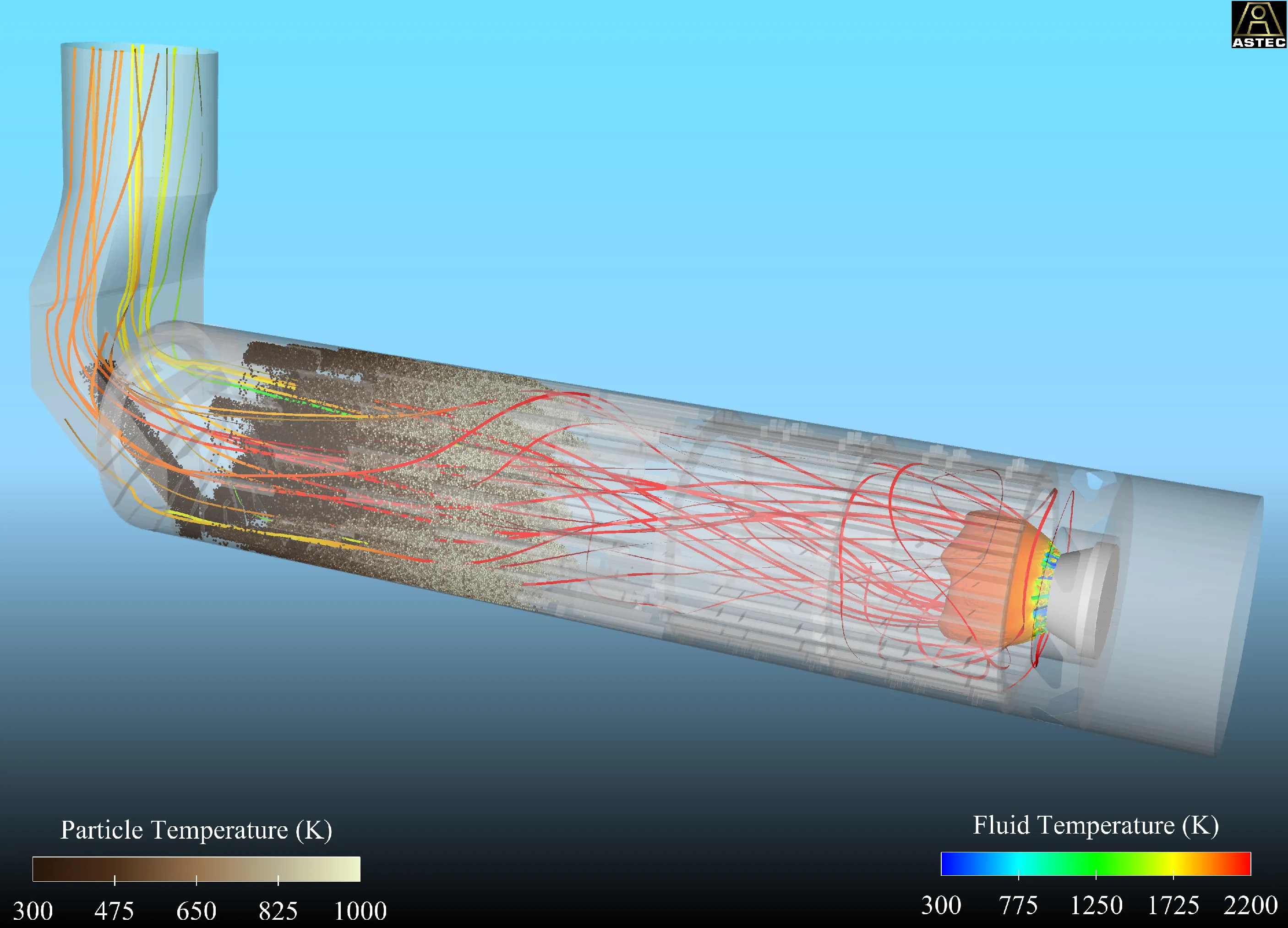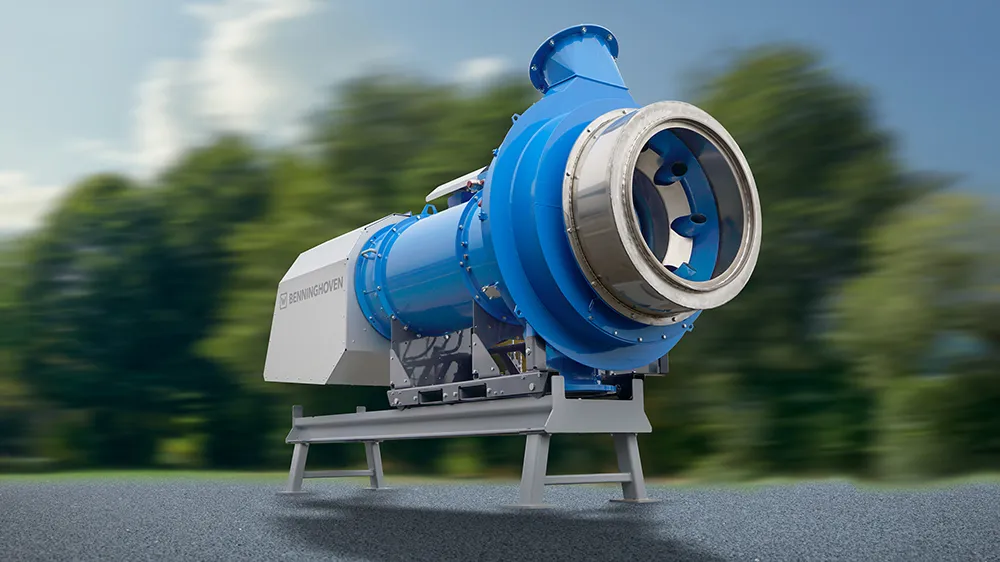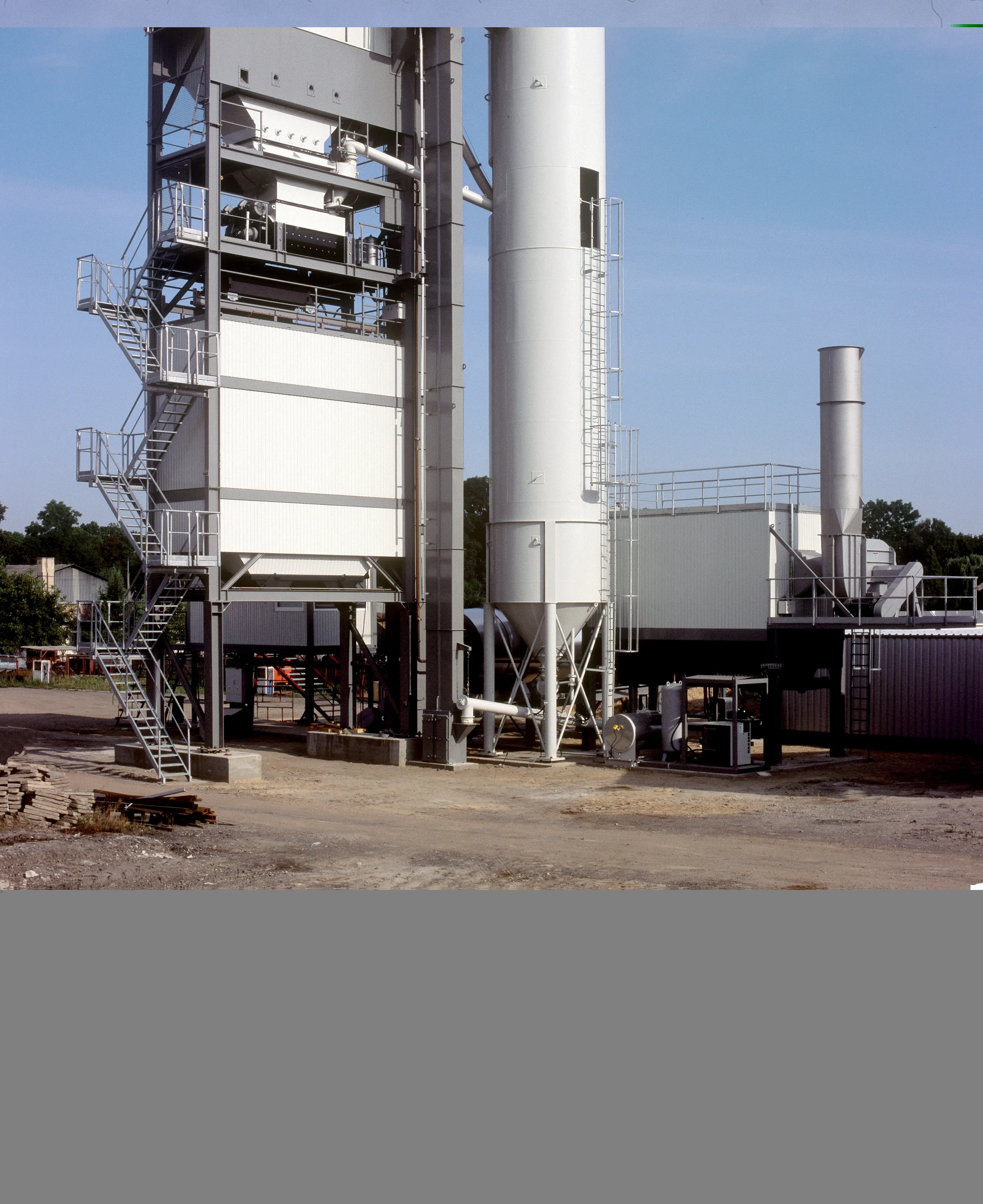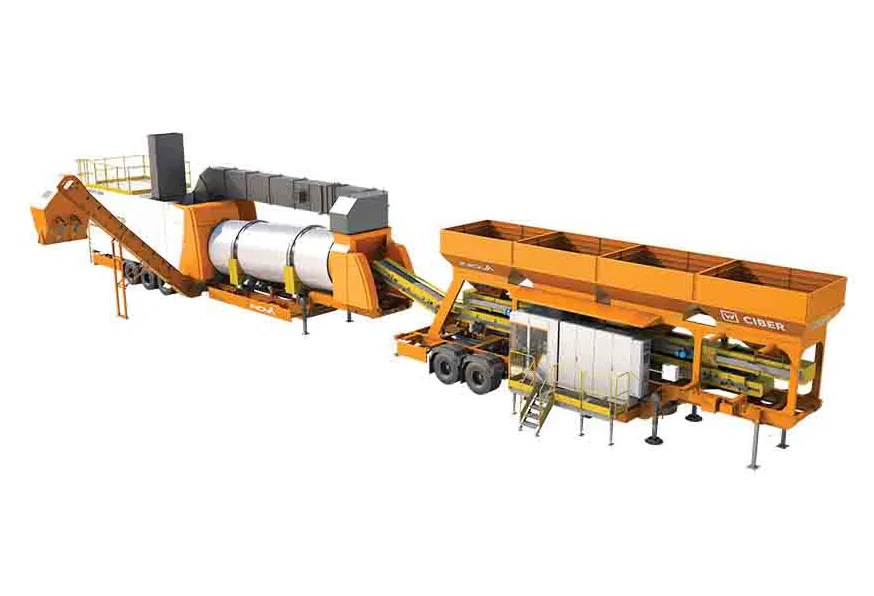Hot-mix asphalt (HMA) is produced at specialised facilities where various mixtures of aggregate are heated and dried, combined with liquid asphalt cement (also known as bitumen), and either stored in insulated silos or loaded into trucks and transported to a job site. Aggregate heating and drying is accomplished with various types of dryers, depending on whether a batch or continuous process is used. The continuous mix process uses aggregate drum dryers, designed to heat and dry measured quantities of grave
July 4, 2012
Read time: 4 mins

Hot-mix asphalt (HMA) is produced at specialised facilities where various mixtures of aggregate are heated and dried, combined with liquid asphalt cement (also known as bitumen), and either stored in insulated silos or loaded into trucks and transported to a job site.
Aggregate heating and drying is accomplished with various types of dryers, depending on whether a batch or continuous process is used. The continuous mix process uses aggregate drum dryers, designed to heat and dry measured quantities of gravel, sand, and other fillers by tumbling the damp contents down the length of a rotating drum.
While tumbling, the aggregate is continuously exposed to a stream of hot air generated by a burner located at one end of the drum. Hot, dry aggregate eventually reaches the far end of the drum and exits, while additional cold, damp aggregate is continuously added to the other end. The removal of ambient moisture is necessary to ensure that the asphalt cement, applied afterwards, will properly adhere to the aggregate.
Continuous mix aggregate drum dryers can process up to 450tonnes aggregate/hour, which consumes a great deal of energy in both heating and rotating the drum.
Efficient drum design and optimisation of the drying process are essential in reducing energy consumption and operational costs for any HMA facility.
1250 Astec designs and manufactures a complete line of continuous and batch process HMA facilities and soil remediation equipment.
Andrew Hobbs, research engineer, evaluates equipment performance and design for Astec, using several computer-aided engineering (CAE) tools in his work, including6089 DEM Solutions' EDEM discrete element method modelling software.
"EDEM plays an important role in our CAE toolbox. We use it on a daily basis to address a wide range of challenges in materials handling and processing, including aggregate mixing and drying, transfer points, and size segregation," says Hobbs.
The aggregate drying process is an essential component of HMA production, and being able to observe the internal dynamics of a drum dryer in action would help Hobbs optimise equipment performance. The drum dryer, with its hostile internal environment, is a difficult piece of equipment to study using conventional means.
He needed a CAE tool that could give him an accurate representation of both heat transfer and particle-equipment interaction inside an operational drum dryer, and to examine the performance of the dryer's internal geometry in dispersing heat; to understand the overall flow of heat and variations in internal temperatures in relation to the tumbling aggregate, and to gather information on the burner performance.
Hobbs had previously used EDEM to model the flow of aggregate through various segments of his materials handling and processing equipment.
When DEM Solutions added the optional feature that couples the FLUENT computational fluid dynamics (CFD) to EDEM, Hobbs seized the opportunity to incorporate these two CAE tools to evaluate equipment performance.
He used the EDEM-FLUENT coupling to model and analyse the particle-fluid interactions, and to capture heat flow and heat transfer in an aggregate drum dryer simulation. By combining information gathered through both DEM and CFD analyses, Hobbs hoped to better understand the internal dynamics of the dryer in operation.
EDEM accurately simulated the movement of aggregate through the length of the dryer and provided a visualisation of particle interactions with the drum's internal geometry, showing the aggregate spilling in a veil, over the cross-section of the drum, an ideal situation for providing maximum exposure to the hot air stream.
The EDEM-FLUENT analysis accurately represented the flow of hot air through the length of the drum; the air temperature gradient, reducing with distance from the burner and in response to interaction with the cold aggregate, and the increasing aggregate temperature with exposure to the hot air stream. The data also provided an analysis of the shape of the burner flame in response to the addition of the aggregate, showing that the flame maintained the compact shape indicative of combustion efficiency.
Hobbs plans to use the data from his EDEM-FLUENT study in developing future dryer designs and also in marketing the current Astec technology to customers.
He is confident that EDEM will continue to provide tools that increase the understanding of equipment performance and will aid Astec in its ongoing commitment to developing energy-efficient asphalt plants. ·
Aggregate heating and drying is accomplished with various types of dryers, depending on whether a batch or continuous process is used. The continuous mix process uses aggregate drum dryers, designed to heat and dry measured quantities of gravel, sand, and other fillers by tumbling the damp contents down the length of a rotating drum.
While tumbling, the aggregate is continuously exposed to a stream of hot air generated by a burner located at one end of the drum. Hot, dry aggregate eventually reaches the far end of the drum and exits, while additional cold, damp aggregate is continuously added to the other end. The removal of ambient moisture is necessary to ensure that the asphalt cement, applied afterwards, will properly adhere to the aggregate.
Continuous mix aggregate drum dryers can process up to 450tonnes aggregate/hour, which consumes a great deal of energy in both heating and rotating the drum.
Efficient drum design and optimisation of the drying process are essential in reducing energy consumption and operational costs for any HMA facility.
Andrew Hobbs, research engineer, evaluates equipment performance and design for Astec, using several computer-aided engineering (CAE) tools in his work, including
"EDEM plays an important role in our CAE toolbox. We use it on a daily basis to address a wide range of challenges in materials handling and processing, including aggregate mixing and drying, transfer points, and size segregation," says Hobbs.
The aggregate drying process is an essential component of HMA production, and being able to observe the internal dynamics of a drum dryer in action would help Hobbs optimise equipment performance. The drum dryer, with its hostile internal environment, is a difficult piece of equipment to study using conventional means.
He needed a CAE tool that could give him an accurate representation of both heat transfer and particle-equipment interaction inside an operational drum dryer, and to examine the performance of the dryer's internal geometry in dispersing heat; to understand the overall flow of heat and variations in internal temperatures in relation to the tumbling aggregate, and to gather information on the burner performance.
Hobbs had previously used EDEM to model the flow of aggregate through various segments of his materials handling and processing equipment.
When DEM Solutions added the optional feature that couples the FLUENT computational fluid dynamics (CFD) to EDEM, Hobbs seized the opportunity to incorporate these two CAE tools to evaluate equipment performance.
He used the EDEM-FLUENT coupling to model and analyse the particle-fluid interactions, and to capture heat flow and heat transfer in an aggregate drum dryer simulation. By combining information gathered through both DEM and CFD analyses, Hobbs hoped to better understand the internal dynamics of the dryer in operation.
EDEM accurately simulated the movement of aggregate through the length of the dryer and provided a visualisation of particle interactions with the drum's internal geometry, showing the aggregate spilling in a veil, over the cross-section of the drum, an ideal situation for providing maximum exposure to the hot air stream.
The EDEM-FLUENT analysis accurately represented the flow of hot air through the length of the drum; the air temperature gradient, reducing with distance from the burner and in response to interaction with the cold aggregate, and the increasing aggregate temperature with exposure to the hot air stream. The data also provided an analysis of the shape of the burner flame in response to the addition of the aggregate, showing that the flame maintained the compact shape indicative of combustion efficiency.
Hobbs plans to use the data from his EDEM-FLUENT study in developing future dryer designs and also in marketing the current Astec technology to customers.
He is confident that EDEM will continue to provide tools that increase the understanding of equipment performance and will aid Astec in its ongoing commitment to developing energy-efficient asphalt plants. ·








